Is your business fully utilizing sandblasting for steel surface preparation? In the competitive field of steel fabrication and maintenance, sandblasting stands out as a critical process for ensuring optimal surface quality.
As an expert in the field of metal surface preparation, I bring a wealth of knowledge and experience in sandblasting techniques specifically tailored for steel.
Sandblasting of steel involves a careful process of cleaning the metal, and removing rust, impurities, and existing coatings, thereby ensuring superior adhesion for subsequent coatings.
In this ultimate guide, you’ll learn about the latest methods, equipment, and safety standards for steel sandblasting, along with tips to enhance efficiency and cost-effectiveness in your operations.
Read on to unlock the full potential of sandblasting.
1. Understanding Sandblasting in the Steel Industry
Building on the importance of sandblasting in steel surface preparation, it’s important to understand its role in the steel industry. Sandblasting, at its core, is a process used to clean, strengthen, or polish metal surfaces. In the context of steel, this technique is primarily employed for cleaning the surface of the steel by forcibly propelling abrasive materials against it.
This process not only cleans the steel of rust, impurities, and old paint, but also prepares it for the application of new coatings, painting, or other surface treatments. Moreover, sandblasting plays a crucial role in inspecting steel components for manufacturing defects or signs of wear. By stripping away surface layers, it reveals the true condition of the steel beneath, allowing for early detection of issues.
This is particularly important in industries where steel integrity is critical, such as in construction and automotive manufacturing. The precision and effectiveness of sandblasting make it a preferred method for maintaining the quality and longevity of steel products.
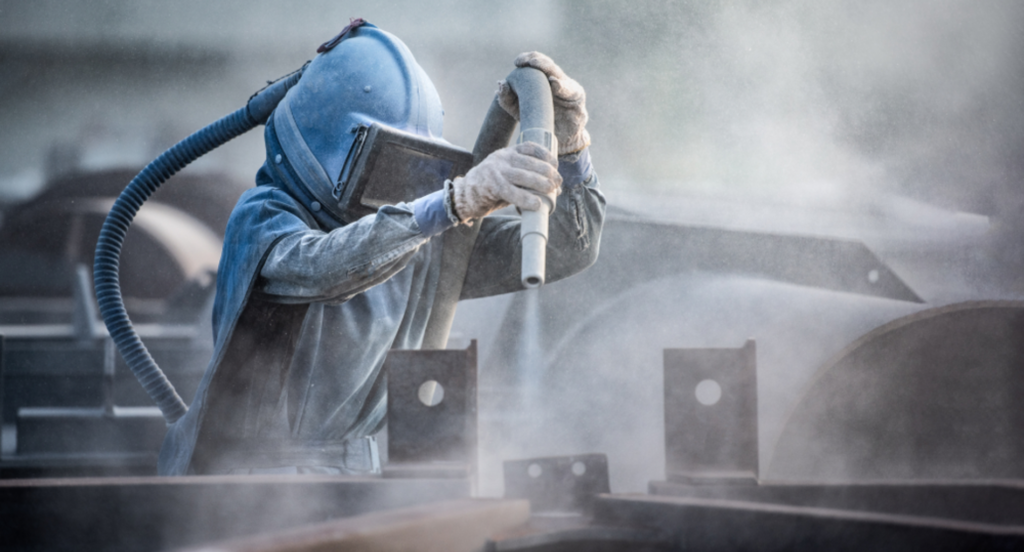
2. Benefits of Sandblasting for Steel
Understanding the process of sandblasting in the steel industry leads us to explore its numerous benefits. This technique is not just about surface preparation; it’s a pivotal element in ensuring the longevity and quality of steel products. Let’s break down these benefits:
- Improved Adhesion:Sandblasting methods for steel effectively remove surface contaminants, providing a clean, roughened surface. This enhances the adhesion of coatings like paint or powder coatings, ensuring they last longer and adhere better.
- Rust and Corrosion Removal: One of the primary uses of sandblasting is to remove rust and corrosion. By doing this, it prolongs the life of the steel, preventing deterioration and maintaining its structural integrity.
- Surface Uniformity: Sandblasting creates a uniform surface texture. This is particularly important for visual aesthetics in architectural steel and ensures consistency in industrial applications.
- Efficiency in Cleaning: Compared to manual cleaning methods, sandblasting is significantly more efficient. It saves time and labor, making it a cost-effective solution for large-scale projects.
- Versatility: Sandblasting can be used on various steel grades and forms, making it a versatile solution in different sectors of the steel industry. This adaptability is a key strength of Zemetal’s services, as we cater to diverse needs in steel treatment.
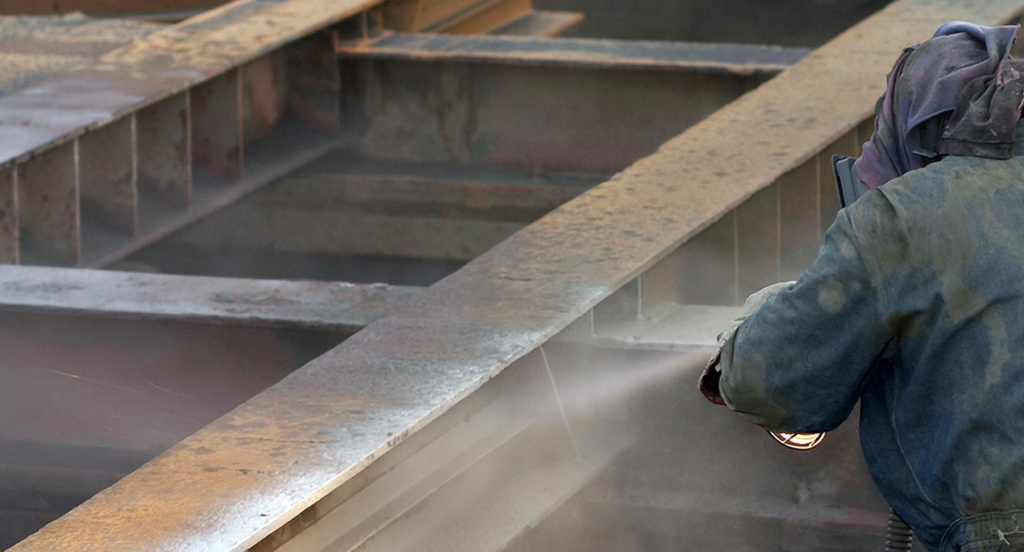
3. The Sandblasting Process
After exploring the benefits of sandblasting, it’s essential to delve into the specifics of the process itself. Sandblasting, when done correctly, can significantly enhance the quality and longevity of steel products. Below are the key stages involved in the sandblasting process:
#1 Surface Assessment
Before beginning the sandblasting process, a thorough assessment of the steel surface is crucial. This step involves examining the steel for any signs of damage, corrosion, or previous coatings. From my personal experience, this initial assessment is crucial as it determines the intensity and type of sandblasting required. It’s not just about cleaning; it’s about understanding the material you’re working with.
#2 Choice of Abrasive Material
The selection of abrasive material is critical and varies based on the steel’s condition and the desired outcome. Options range from traditional sand to more specialized abrasives like steel grit, glass beads, or even organic materials. According to Volza’s Global Abrasive materials Exporters & Suppliers directory, there are 7,649 active Abrasive materials Exporters in World exporting to 7,452 Buyers.
#3 Equipment Setup
Proper setup of sandblasting equipment is essential for an efficient and safe operation. This includes preparing the sandblaster, setting the right pressure levels, and ensuring all safety gear is in place. Personal attention to detail in this step can make a significant difference in the overall effectiveness of the process.
#4 The Sandblasting Operation
During the sandblasting operation, the chosen abrasive is propelled at high speed onto the steel surface. This action effectively removes rust, scale, and old paint, leaving the steel clean and textured. It’s a satisfying moment to see years of grime and rust being stripped away, revealing the clean, raw steel beneath.
#5 Post-Sandblasting Procedures
After sandblasting, the steel surface usually undergoes further treatments, such as painting or coating. It’s also essential to clean and dispose of the used abrasives properly, adhering to environmental regulations. There are companies that ensure that post-sandblasting procedures are carried out with the same level of precision as the sandblasting itself, ensuring a high-quality finish.
4. Advanced Techniques in Steel Sandblasting
Moving from the basic sandblasting process, we now turn our attention to advanced techniques that are changing the way steel is treated. Here are some of the cutting-edge techniques for steel sandblasting:
Automated Sandblasting Systems
Automation in sandblasting has brought about a significant shift in the industry. Automated systems use robotic arms or conveyor belts to sandblast steel parts, ensuring consistent quality and reducing the need for manual labor. This technology is particularly beneficial for large-scale or repetitive tasks, where precision and uniformity are key.
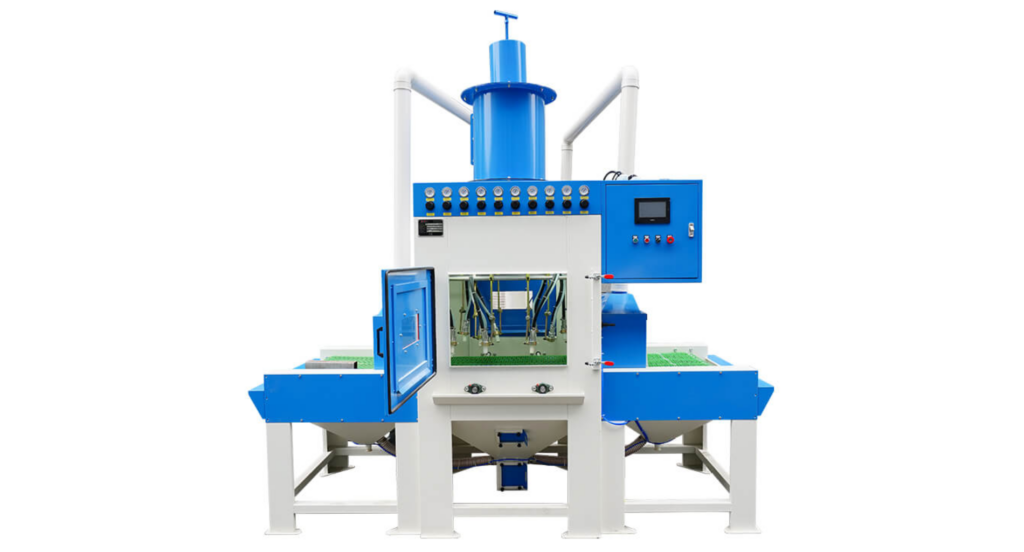
Wet Sandblasting
Wet sandblasting is an advanced technique where water is mixed with the abrasive material. This method reduces dust generation, making it an environmentally friendly and healthier option for operators. Additionally, the presence of water reduces the heat generated during the process, minimizing the risk of warping thin steel surfaces.
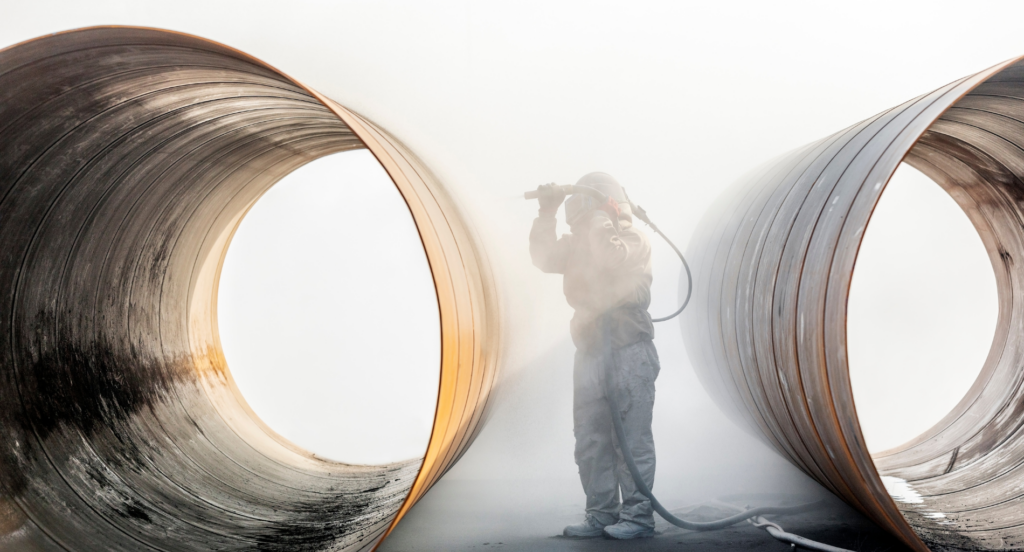
Micro-Abrasive Sandblasting
Micro-abrasive sandblasting uses fine abrasives and a small nozzle to target precise areas with great accuracy. This technique is ideal for delicate or intricate steel components where traditional sandblasting could be too aggressive. An example of this could be the precise cleaning of weld seams or the removal of coatings from small mechanical parts.

Vacuum Blasting
Vacuum blasting, or dustless blasting, is a technique where the abrasive blasting and debris collection occur simultaneously. This method is particularly useful in situations where dust generation needs to be minimized, such as in confined spaces or in close proximity to sensitive equipment.
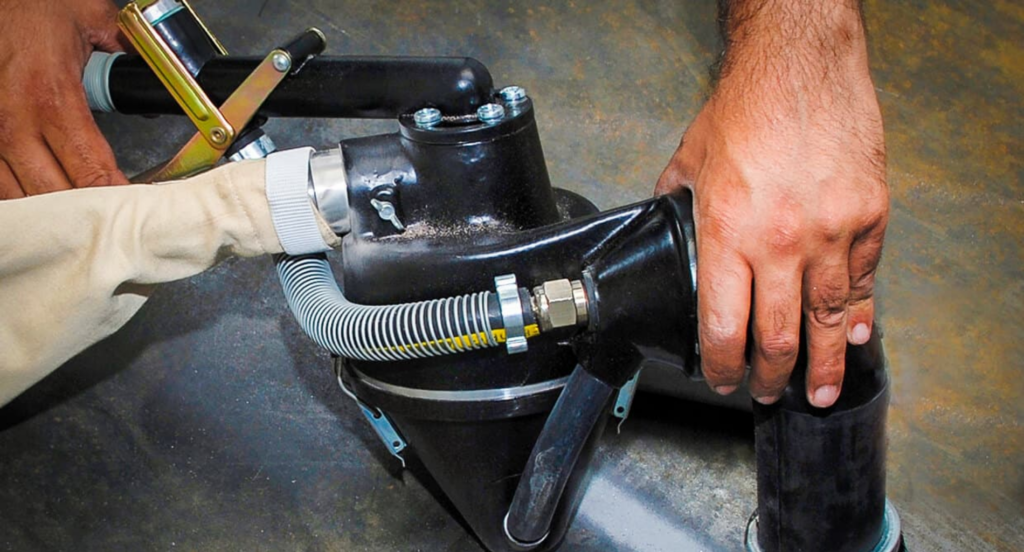
5. Cost-Effectiveness and ROI of Sandblasting Steel
As we explore the advanced techniques in steel sandblasting, it’s crucial to address the economic perspective. Understanding cost-effectiveness and return on investment (ROI) is essential. See the following sections for an in-depth analysis:
Initial Investment vs. Long-Term Savings
The initial investment in sandblasting equipment and materials can be significant. However, this should be weighed against the long-term savings it offers. Sandblasting extends the life of steel structures and components by preventing corrosion and wear. This means fewer replacements and repairs, leading to substantial cost savings over time.
Efficiency and Labor Costs
Sandblasting is highly efficient compared to traditional manual cleaning and preparation methods. This efficiency translates into reduced labor costs. For example, a task that might take several hours or days to complete manually can often be done in a fraction of the time with sandblasting, significantly reducing man-hours.
This table highlights the aspects of efficiency and labor cost savings in sandblasting compared to traditional manual methods, focusing on time efficiency and its impact on reducing man-hours.
| Aspect | Description | Impact on Labor Costs |
| Time Efficiency | Completes tasks quicker than manual methods | Drastically reduces man-hours |
| Uniformity and Consistency | Achieves consistent results faster | Lowers the need for rework |
| Reduced Physical Labor | Less physically demanding than manual cleaning | Decreases labor intensity |
| Skill Level Requirements | Requires specialized training but less manual labor | Shifts focus from quantity to quality |
| Scalability | Easier to scale for larger projects | Reduces additional labor for big tasks |
Quality and Reduced Rework
The quality finish achieved through sandblasting often means reduced rework. Zemetal’s services never fail to ensure a well-prepared surface to ensure better adhesion of coatings, reducing the likelihood of future peeling or corrosion. This quality outcome minimizes the need for frequent touch-ups or redoing work, directly impacting the bottom line.
6. Challenges and Solutions in Steel Sandblasting
In discussing the cost-effectiveness and ROI of sandblasting steel, it’s equally important to acknowledge the challenges faced in this field and the solutions that can be applied. Listed below are the common challenges and their solutions:
Environmental and Health Concerns
One major challenge in steel sandblasting is the environmental and health impact, especially related to dust and hazardous materials. Traditional sandblasting can generate a significant amount of dust, which poses risks to both the environment and the health of workers.
Solution: Adopting dustless or vacuum blasting techniques significantly reduces dust emissions. Additionally, using eco-friendly and less toxic abrasives can mitigate environmental and health concerns. Implementing strict safety protocols, including proper ventilation and personal protective equipment (PPE), is also essential.
Surface Damage and Quality Control
Another challenge is the potential for surface damage, especially when dealing with delicate or thin steel structures. Overly aggressive sandblasting can warp or etch the surface, leading to structural weaknesses.
Solution: The key here is to use the right abrasive material and technique for the specific steel type and condition. For instance, softer abrasives like walnut shells or soda can be used for delicate surfaces. Additionally, training operators to correctly adjust pressure and distance can prevent surface damage. In my experience, the operator’s skill is just as crucial as the equipment used.
Cost Management and Efficiency
Cost management and maintaining efficiency in operations are ongoing challenges in the sandblasting industry. Balancing quality, speed, and cost-effectiveness is a delicate task, especially for businesses looking to stay competitive.
Solution: Investing in modern, automated sandblasting systems can improve efficiency and reduce labor costs. Regular maintenance of equipment also ensures optimal performance, reducing downtime and repair expenses. I have found that continuous process optimization, such as regularly evaluating and adjusting techniques and materials, can lead to significant cost savings without compromising quality.
7. 4 Tips for Choosing the Right Abrasives for Steel Sandblasting
While addressing the challenges and solutions in steel sandblasting, it becomes apparent that the choice of abrasive material plays an important role. See the following tips for selecting:
#1 Right Grit Size for Precision
The grit size of the abrasive plays a crucial role in determining the finish of the steel surface. Choosing finer grit sizes can yield better results for services requiring high precision, such as preparing surfaces for detailed work or fine coatings. Conversely, for rapid rust or paint removal, coarser grits may be more effective. Understanding the impact of grit size can guide making informed decisions for all specific needs.
#2 Specialty Abrasives for Complex Parts
For complex or sensitive steel sandblasting jobs, consider using specialty abrasives like walnut shells or plastic beads. These materials are less aggressive and can be ideal for delicate surfaces or where minimal substrate erosion is required. Offering such specialized services caters to a niche market segment and can set your business apart as a provider of comprehensive solutions.
#3 Cost and Performance
In selecting abrasives for sandblasting services, balancing cost-effectiveness with performance is key. While higher-grade abrasives may offer better results, they also come at a higher cost. Service providers need to evaluate the specific requirements of each project and choose abrasives that offer the best balance between cost and desired outcomes. This can help maintain competitive pricing while delivering high-quality services.
Conclusion
In summarizing this comprehensive guide, it’s clear that understanding the distinctions of sandblasting steel is key to enhancing the quality and longevity of steel products. This knowledge serves as a valuable resource for those seeking to optimize their sandblasting practices in the industry.
For businesses looking to elevate their steel treatment processes, Zemetal offers expert sandblasting services tailored to all specific needs. To explore how we can benefit your business operations, kindly contact us.








